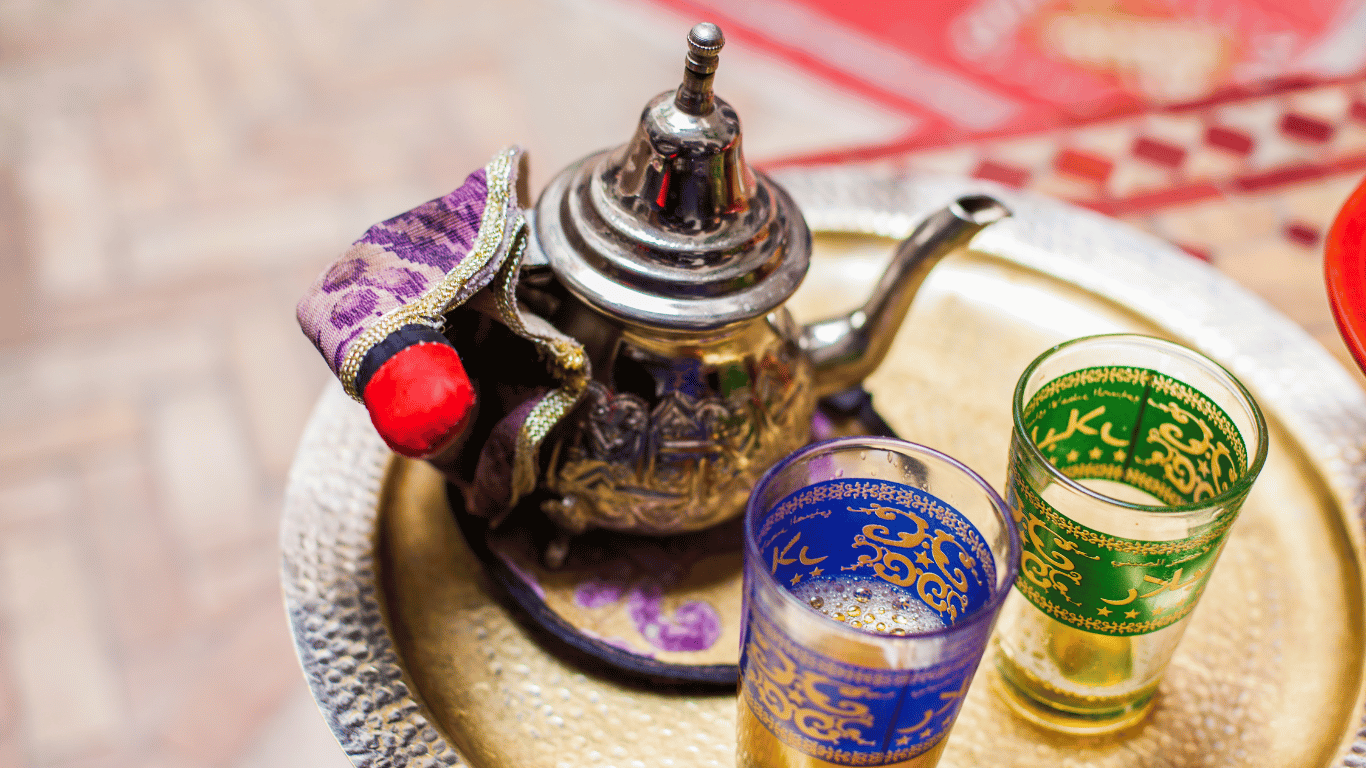Table of Contents
Fantasize strolling the maze-like souks of Marrakech; traders are contacting you to carry a look at their wares. And sapphire-blue water jugs and alien-colored ceramics envelop you, elaborate mats of every shade, multi-colored slippers, sparkling flatware jewelry, and lovely pies dribbling with flame. These are the sights and sounds of fragrances of the Marrakech Medina. As you also drive through the replete market, you spy a retailer selling standard Berber tea; parched from your trek through the sizzling and dusty souk, you choose to sit down and example this most favorite libation of Morocco.
History
The rule of tea dates around to the 12th century BC. Mixed ideas exist about the basis of tea in the Maghreb.
Some say the Amazigh imported tea from Asia. At the same time, others think that Queen Anne Stuart of Great Britain presented tea to them as a ploy to free British convicts.
Practice of Tea Traces all the way Back to the Twelfth Century BC
Tea is not only about cooking the moisture and counting mint. It is proper art, a practice for us, equal to the Chinese and Japanese,” states Saoud, a teacher. And host of La Maison Arabe’s tea tradition. Souad demonstrates a tea ceremony as part of the daily cookery courses delivered by La Maison Arabe.
Traditions are given from era to era. The tradition of Moroccan tea can also be celebrated in a personal house. And experiencing a cookery course or in the souks. Suppose you ask a Moroccan about recollections of their youth. They will frequently transfer an image of their mother in the kitchen, blending together an herbal mint tea to ward off a cold or improve a family member’s digestion.
Moroccan Berber Tea Cycle
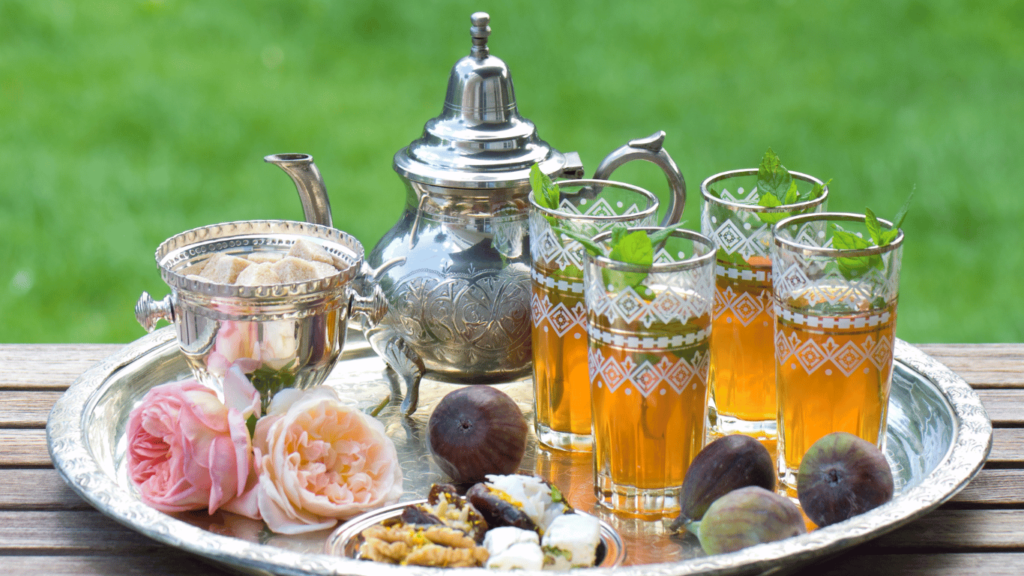
The practice of the tea is a whole skill. And it is also the skill of patience,” Mehdi cries. True tea connoisseurs never organize it in a few minutes but rather peacefully while chatting with friends. Although the method is long, it must be worth it because Moroccans have been sipping tea this way since it was first presented in Morocco in the 18th century by the British.” Why does Mehdi believe tea creates a craft? He notes, “Despite the wait when the tea yet arrives in our glass, it is still hot. There are many ways to construct tea.
Moroccan Mint Tea Recipe
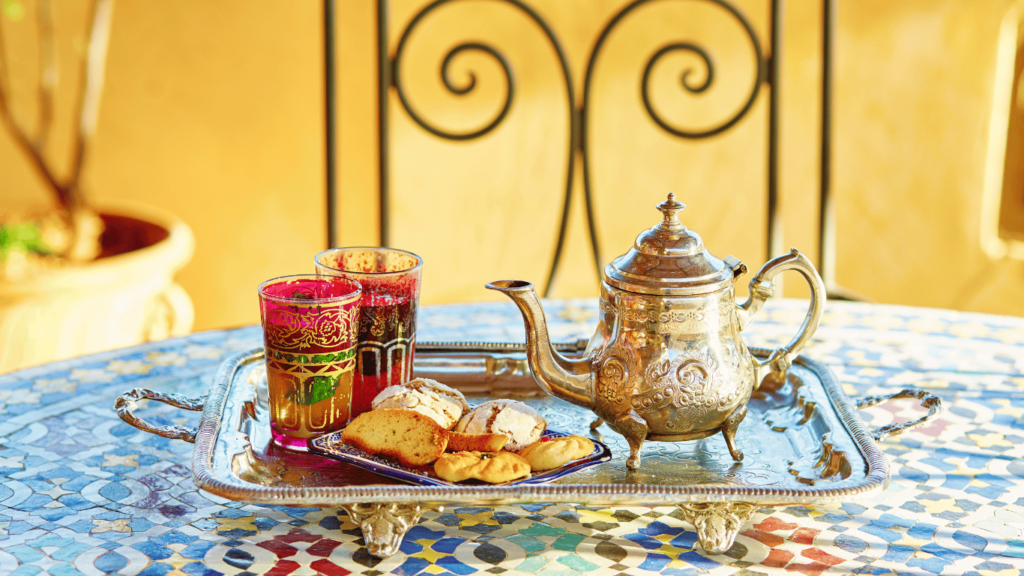
Stream boiling water into the teapot and waggle it about. And then stream it out.
Next, add 1 to 2 teaspoons of green tea leaves to the teapot. And add some water. Let it sit for a minute, and then pitch that water out. This is to extract the bile from the tea.
Then add simmering water around to the tea jar; add fresh mint leaves and sugar cubes.
Push the mint leaves to the base of the glass and permit them to soak for two to three minutes so that all of the taste is removed.
According to Mehdi, the tea experts hold the teapot actually elevated above the glass while running. If you can remove that, not only will you be wanting delectable tea, but you’ll look rather relaxed doing it. Just be mindful not to steam yourself.
There are three Head Fixings in Practically Some Moroccan Mint Tea
Black Powder
Believing how often Moroccan mint tea is finished. And numerous people are surprised to learn that tea is not created in Morocco. Tea utilized by Moroccans is imported from China. The base of Moroccan mint tea is gunpowder, which closely compares exact gunpowder and looks comparable to rolled-up shots. While gunpowder is the equivalent of green tea, it tastes quite more powerful than the type of innocent tea most people are aware of. When combined with Moroccan herbs or new mint, gunpowder’s forceful and smoky flavor loans an unusual taste to the tea itself.
Beetroot
Another essential component in Moroccan tea is sugar; however, not just any sugar. Moroccans use a few wedges of healthy Beetroot sugar to improve the taste of their tea. Beetroot sugar is grown in Morocco and comes from the beetroot vegetable, which is filled with minerals and vitamins. Downing tea in Morocco without Beetroot and Cane sugar is irregular. Yet, as an effect of alien influence and diabetes, more Moroccans are sipping tea today with minor or no counted sugar. Moroccan tea without sugar plants is more intense and stronger in taste. The mixture of gunpowder and mint without sugar causes the tea to take on a painful taste.
Spearmint
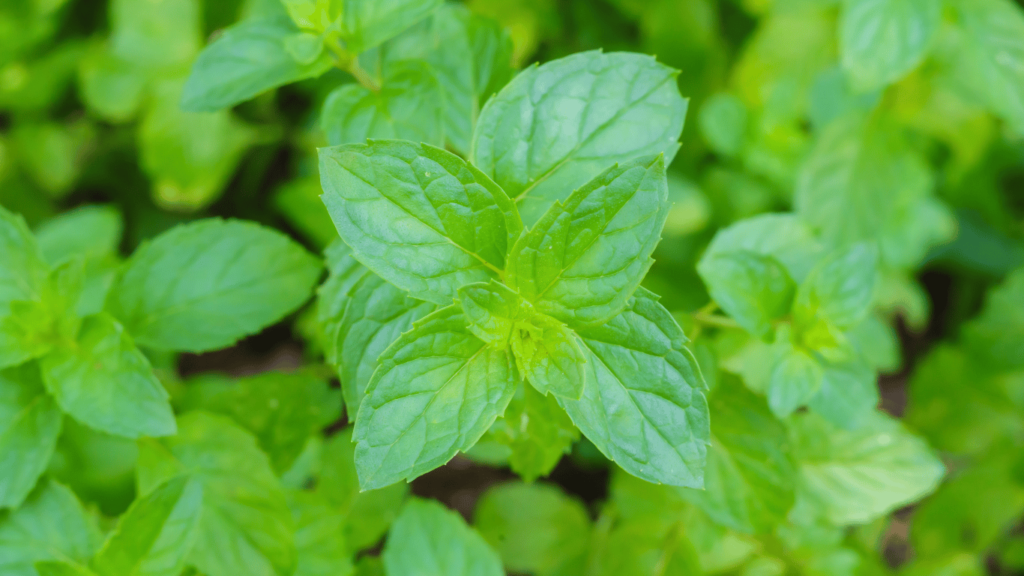
There are several other types of mint tea produced. However, the consistent intention is spearmint. Spearmint has an exact, intense, and mild aroma, making it the definitive choice used in tea culture.
Benefits
Moroccan Mint Tea Mitigates The Psyche
Pressure is inescapable from time to time and can actually hinder our dashes when it involves the brainiac with its many nerve relations. The remains of the body feel the effect as well.
It can be difficult to destroy tension. But Moroccan mint tea can support taking the edge off the periodic concern. The smell may relieve emotions of frustration, misery, and tiredness.
Investigators discovered that living in the peppermint scent of the exact family as the spearmint Moroccans use in mint tea may soothe anxiety for individuals who were hospitalized for heart episodes or birth.
Moroccan Mint Tea Further Develops Assimilation
Moroccan mint tea may accomplish surprises for digestive signs, such as gas, bloating, and indigestion.
It is an honest treatment to help patients with irritable bowel syndrome due to the cooling impact of menthol in mint tea, which soothes an upset tummy and controls digestion. Menthol can soothe the stomach forces that can employ and induce cramping. It also improves bile in the stomach. Which allows you to digest food smoothly, decreases feelings of nausea, and supports your digestive system operating efficiently.
Moroccan Mint Tea Treats Awful Breath
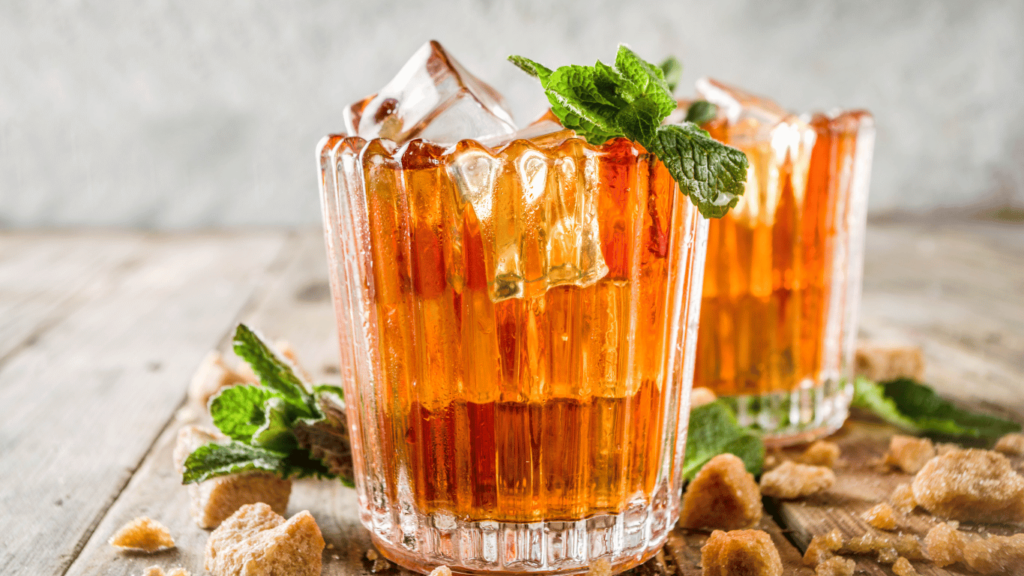
Continuous bad puff is usually due to bacteria in the chops. These bacteria deliver gasses and can cause bad smells. The smell appears when the bacteria die down sugars and starches in meals.
And the core freshens your gust. The fragrant smell of mint tea helps to mask bad puff. Antibacterial properties work from within to deter the embryones and periodontal bacteria that induce bad puffs in the foremost place.
Moroccan mint tea is an antioxidant-rich drink that contains foul drag by preventing plaque and bacteria. It possesses antibacterial effects that battle off the inherently happening embryones in your mouth.
Conclusion
There are the sights and hints of scents of the Marrakech Medina. As you pass through the loaded market, you spy a retailer selling standard Berber tea. Moroccans have been tasting tea this way since it was first introduced in Morocco in the eighteenth hundred years by the British.” Sipping tea in Morocco without Beetroot or Natural sweeteners is rare. It can be hard to obliterate strain. Yet, Moroccan mint tea can bring some relief to the occasional concern. Moroccan mint tea is a cell reinforcement-rich beverage that contains foul drag by forestalling plaque and microbes.

